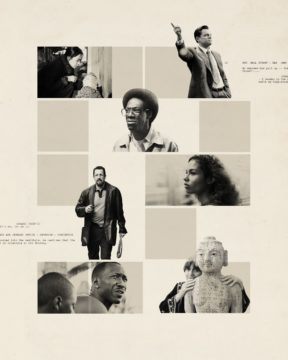Richard Brody in The New Yorker:
 The best cinematic performances don’t share some standard of craft or technique; what they have in common is a feeling of invention and discovery, of emotional depth and power, and a sense of self-consciousness regarding the idea and the art of performance itself. They also reflect broader transformations in the art of cinema during their times. Such actors as Joan Crawford, Barbara Stanwyck, and Jimmy Stewart were already stars in the high studio era of the nineteen-thirties, but their work became more freely expressive, more galvanic, in the postwar years, when the studios lost their tight grip on production—and when a new generation of directors made their mark in that freer environment. The French New Wave, developing new techniques with a new generation of actors (and crew), lifted layers of varnish from the art of acting to fill the screen with performances of jolting immediacy, spontaneity, and vulnerability.
The best cinematic performances don’t share some standard of craft or technique; what they have in common is a feeling of invention and discovery, of emotional depth and power, and a sense of self-consciousness regarding the idea and the art of performance itself. They also reflect broader transformations in the art of cinema during their times. Such actors as Joan Crawford, Barbara Stanwyck, and Jimmy Stewart were already stars in the high studio era of the nineteen-thirties, but their work became more freely expressive, more galvanic, in the postwar years, when the studios lost their tight grip on production—and when a new generation of directors made their mark in that freer environment. The French New Wave, developing new techniques with a new generation of actors (and crew), lifted layers of varnish from the art of acting to fill the screen with performances of jolting immediacy, spontaneity, and vulnerability.
The film performances of the beginning of the twenty-first century are a product of the drastic transformations that have taken place in moviemaking in recent decades, as a new generation of directors, both in Hollywood and outside of it, has managed to invent modes of moviemaking capable of adapting to unprecedented crises in the industry. The competition from television (“prestige” or otherwise), the top-heavy expansion of blockbuster franchises, and the rise of streaming platforms have led to a decline in studio movie production. As a result, independent producers have grown significantly in prominence and power, and their financing has had a liberating effect on directors, and, by extension, on actors: working largely with modest budgets (yet occasionally with larger ones than studios would provide), filmmakers have been able to take greater risks and make more unusual films—and to develop new methods of performance with actors whose artistry closely fits their own.
More here.
